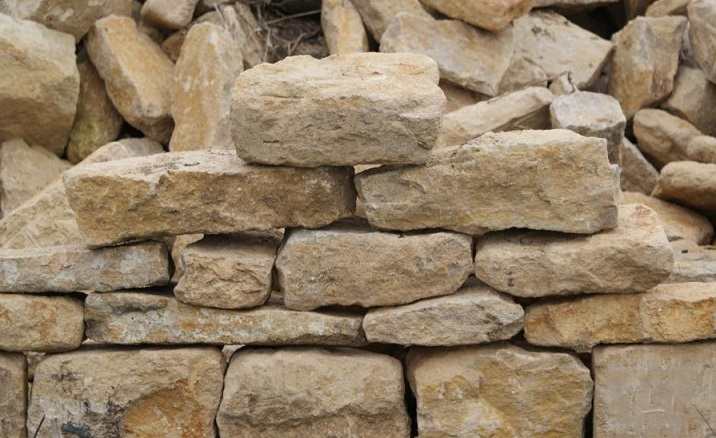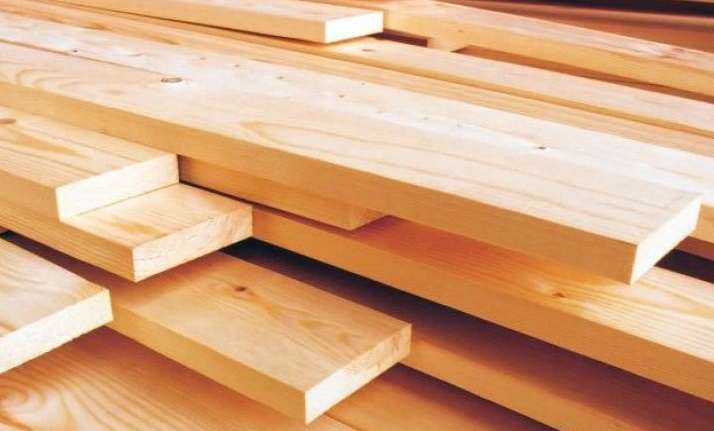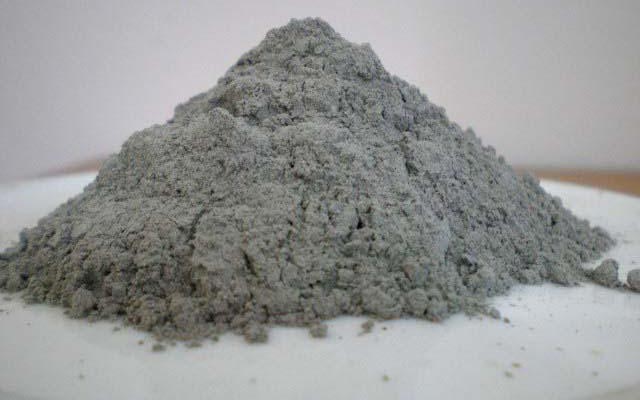Building materials are the substances used for construction purposes, like materials for building a house.
The use of a wide variety of building construction materials has already been included in any Construction project since ancient times. Early Egyptians and Greeks used limestone, and gypsum as one of their make Construction materials. The major breakthrough within the building materials came, in the early 18th century, with the invention of Portland Cement by Joseph Aspdin, a Leeds builder and bricklayer. It is followed by the introduction of a wide range of materials to be used as a building material.
Due to the rapid technological up-gradation within the out Construction industry, the range of the building materials has been spread even wider, and as time will pass on, we are likely to see even more types of building materials to be introduced within our Construction industry.
Selection of Building Materials
As already stated earlier, there is a wide range of Building Materials, used in any building construction. Now the types of Building Materials, that should be chosen, are controlled by some external factors, some of which has been mentioned below-
- Aesthetic View of the Building
- Financial capacity of the Owner
- Different topographical features
- Type and Shape of the building
- Subsoil condition of the building, where it is to be Constructed.
- Environmental Conditions.
For the construction of two similar buildings, with almost same acquired land and a same number of stories, in the same topographical area, the Financial capacity of the owner, and the aesthetic view becomes one of the most important controlling factors, in deciding the type of building materials to be used. Naturally, we don’t usually see, two exactly similar building, exactly beside each other (except in the case of staff quarters).
Types of Building Materials
Following are the type of the most common building materials, which are a popular choice in any building construction, along with their Advantages and Disadvantages of using it.
Stone
Stones are very popular building materials, as they got adequate drainage capacity. So in the place of high rainfall region, the stones can be conveniently used as a construction material. Stones are generally a Non-metallic mineral matter, which is cut pieces of rock, which are the hard material on Earth’s crust being exposed over the surface or under the soil.

Stones can be broadly classified into two categories, they are—
Natural Stones:
Natural stones are obtained by cutting pieces directly from the rocks, which are formed in the earth’s Crust by the geological action of different external factors. Again the type of rocks and source from which the rocks have been formed are different, and so, the quality, hardness and other different factors of the stones formed from these rocks, differ.
The process by which the natural Stones are obtained from the rocks are known as Quarrying, and the place where the stones are extracted from the rocks are known as Quarry. After quarrying, the stones are cut into different sizes and given suitable finishes. This method is known as dressing, which is primarily done at the quarry site, and later to the shops.
There are many different types of dressing a stone, such as:
- Hammer face: Can be attained by simply knocking out the sharp edges
- Chisel Drafted: It is attained by making a wide margin around the face of the block
- Boasted Finish
- Reticulated Finish
- Plain Finish and Polished Finish
- Sand Blasting, etc
Artificial or Cast Stones:
Artificial Stones are those, which are artificially cast with other Construction materials(usually Concrete) and are used in the construction site. These stones are generally Prefabricated, and it offers excellent progress to Construction activity, as their size is large. The mortar requirement for using artificial stones are also very less. There are mainly two types of Artificial Stones used, which are—
- Solid Concrete block (400×200×150)
- Hollow Concrete block (400×200×190)
The minimum strength requirements for this type of blocks are 4Mpa. They are being manufactured by a lean mix of concrete having the size of aggregate less than 12mm.
Advantages of Stones
- One of the biggest Advantage of using stones as building materials are that the stones possess adequate drainage property, so it is widely used on high rainfall region.
- Stones, through dressing, can give attractive finishes as well as smoothness on the surface. Also, the types of dressings differ, so a wide range of attractive finishes can be attained by using stone.
- It is very evenly coloured, easy to shape and the texture improves with time.
Disadvantages of Stones
- They are suspectable to moisture damage.
They are very costly to Construct, and giving suitable finishes costs even more as well as this process is time-consuming.
Bricks
Bricks are the most common types of building materials used mostly in any residential construction. Bricks are the small blocks of burnt or sun-dried clay, commonly used for building walls. Bricks are being used since ancient times, from Indus Valley Civilisation, about 5000 years ago.

The ingredients which are used for the Manufacture of clay bricks are Silica, Alumina, Magnesia, Iron Oxide, Lime. The composition of Lime and Magnesia is accurately controlled in the manufacture, as these two materials cause unsoundness in bricks. The standard size of Bricks is 190×90×90mm for Bricks without Mortar and 200×100×100mm with Mortar. Although there are many places where bricks of Traditional Sizes(230×110×75mm) are being used.
There are three types of bricks used, depending upon the type of construction, those are—
Refractory or Fire clay Bricks
The refractory or fire clay bricks are used to withstand high temperature up to 1300°C. These types of bricks are mainly used in lining furnaces, where withstanding high temperatures are of prime importance.
Hollow Bricks:
These bricks are light in weight and provide good thermal insulation. They are generally employed for constructing walls and partitions. The faces of the bricks can be smoothened or keyed for plastering.
Fly Ash Bricks:
Fly Ash is the waste product obtained from the burning of coal or lignite in various industries. Clay, when mixed with fly ash and lime, improves the overall properties of the bricks, and as well the fly ash is being adequately utilised without posing a threat to environmental pollution.
Advantages of Bricks
- Bricks are energy efficient.
- They need low maintenance and they are weatherproof
- Bricks are sustainable.
Disadvantages of Bricks
- They do not give an attractive finish to the surface
- Bricks are not as strong and durable like a stone as a building material.
- Bricks absorb water, which in later results in Dampness.
Also Read: Manufacturing of Bricks
Mortars
Mortar is an intimate mixture of inert cementing material, fine aggregate and water uniformly mixed together in a certain proportion. They are widely used in Masonry Construction and plastering surfaces. Cementing material used are mud, lime, cement or a combination of those. Depending upon the proportion of Cement and sand, they are used for various purposes,–
- For Masonry Construction- 1:6-1:8
- Plastering Masonry- 1:3-1:4
- Plastering Concrete- 1:3
- For pointing works- 1:2-1:3
Mortar can be classified into three categories, they are—
Mud Mortar
Clay is suitable for making mud Mortar. Sometimes, fibrous materials such as cow dung are added to the mix to prevent cracking in the mortar. They are very cheap, but their durability is less as compared to lime mortar and cement mortar.
Lime Mortar
It is one of the oldest types of mortar, used widely in ancient Construction. Generally, Fat lime or hydraulic lime is used for making this type of mortar. Fat lime is suitable for plastering, while hydraulic lime is suitable for Masonry Construction.
Cement Mortar
This type of mortar is widely used in most of the projects. Cement mortar provides a number of advantages over like and mud Mortar such as it gives pointed joints to the Masonry, as well as provides a smooth and attractive finish to the surface.
Advantages of Mortar
-
- Mortars are excellent Binder, and they possess good bonding strength
- They give attractive finishes to the exposed surface.
- Cement mortars possess Excellent compressive strength.
Disadvantages of Mortar
The main disadvantages of mortar are that it possesses low tensile strength, shrinkage by drying and they possess low chemical resistance.
Timber
Timber is the moistureless wood. They are widely used as building materials, and they provide very attractive appearances when used. Some examples of timber are teak, deodar, sal, etc, and their demand is very high in India.

Some of the materials which are made by timber are as follows—
- Plywood: Made by thin layers of wood.
- Particleboard,
- Veeners
Advantages of Timber
- They have good insulation properties
- Their aesthetic appeal can be enhanced
Disadvantages of Timber
- They are not shock absorbent and Vibration resistant.
- They are not fire-resistant.
Glass
The material glass is known to us humans for a very long time, from ancient Civilisation. People at the Stone age used naturally occurring glass for various purposes, especially as a weapon for hunting purposes. At some places, people also made glass by burning certain kind of sand in the fire. As science and technology advanced, the availability of various kinds of glasses as well as manufacturing them, became easy by using certain advanced tools and Techniques. Nowadays, glass is being used as effective building materials for modern Construction, for various purposes as it offers a wide range of Advantages, that other building materials don’t.
Types of Glass
There are generally 6 types of glass available, to be used in any building construction. They are—
- Soda Lime glass: Manufactured from a mixture of Sodium Silicate Calcium Silicates, this type of glass is generally used for making Window panes, laboratory tubes and apparatus.
- Potash Lime glass: This type of glass is Generally Manufactured from a Mixture of Potassium Silicate and Calcium Silicate. It is used to fabricate glass articles where high temperature is of the prime importance.
- Potash Lead Glass: It posses great lustre and high refractive power, making it useful for the Manufacture of Artificial gems, lenses, electrical bulbs and prisms.
- Common Glass: It is Generally green, Yellow or brown in colour. It is used to Manufacture medicine bottles.
- Coloured glass: Generally used for making fancy articles and decorative tiles.
- Special Glass: It can also be subdivided into various categories, such as- Fibreglass, Wired glass, Safety glass, Bulletproof glass, Shielding glass.
Advantages of Glass:
- Glass can withstand high temperature, making it suitable for every construction, making it a very useful material in a fire.
- It gives glossy and attractive appearances to the building, making it a very useful material for aesthetic purposes.
- It is dustproof and waterproof and can be recycled.
Disadvantages of Glass:
- it is costly as it consumes much effort and very high temperature to Manufacture. Thus it is not Generally a considerable material in the construction, where financial aspects hold great importance.
- Glass as a material is very much heavy. Thus it increases the self-weight of any member and not a suitable choice from the Structural point of view.
- Glass is Brittile which makes it unsuitable for the Structures in earthquake-prone regions.
Plastic
Plastic is an organic material, which is prepared from resin. It can be defined as a natural or synthetic organic material, which has the property of being plastic at some stage of its manufacture when it can be moulded into required size and shape. Nowadays, there are around 10000 types of plastic available on the market, which owes to the tremendous increase in the production of plastic due to technological upgradation.
Uses of Plastic
Plastic can be used building materials for different purposes, such as—
- Flooring: Plastic can be used in the form of sheets or tiles for flooring purposes.
- Retrofitting & Jacketing: Retrofitting is the advanced repair mechanism that is implemented to the Structure, which needs maintenance. Fibre Reinforced Plastic (FRP) sheets are the most common material, used specifically for this purpose.
- For Doors and Windows: FRP doors and windows are the latest trends in Buildings, as they are Waterproof.
- Electrical Conduits and insulators: Plastic pipes are used as electrical Conduits. Electrical switchboards, switches are also being Manufactured using it.
- Pipes: Plastic pipes are a common choice for domestic water supply. They are used as drainage pipes also.
There are many other purposes for which plastics are used as an economical building material.
Advantages of Plastics:
- Plastic has low self-weight, which gives it a higher preference where loads are of prime importance.
- It is also waterproof, so they can be used for various purposes in the building.
- Plastics are reasonably strong. Their tensile strength may be increased by reinforcing with them with various fibrous materials.
Disadvantages of Plastics:
- Plastic is not fireproof and burning plastic may pose a serious threat of environmental hazards.
- Recycling plastic takes a lot amount of effort, which may not be always applied.
Steel
In the construction of commercial establishment, workshops, railway station, storages, this is one of the most important materials, which Is immensely used as one of the traditional building materials. Steel, an alloy of carbon, is equally strong in compression and tension. In most of the reinforced Structures, steel are used as round or flat bars to resist the tensile stress on the Structure, which may act due to different load combinations.
Steel is generally classified into three types—
- Mild steel: contains carbon content of 0.1-0.25%
- Medium Carbon Steel: Carbon content is 0.25-0.75%
- High carbon Steel: contains carbon content up to 1.1%
Type of steel sections:
Nowadays, there are plenty of steel forms available in the market, which may be used depending upon the type and purpose of the construction work. Such sections are—
- Rolled Steel Sections: These may consist of—
-
- I- sections
- Channel sections
- Angle sections
- Tee sections
These sections are used as components members in the erection of trusses in workshop Buildings.
- Bars: The bars are generally classified into the following types—
-
- Round bars
- Square bars
- Ribbed bars
- High tensile bars
- TMT bars
Reinforcing bars are widely used as reinforcement in Structures, where tensile stresses are liable to act.
- Flats: In case of Reinforced brick masonry, steel flats are used as reinforcing materials. They come in various sizes.
- Sheets: In shoring and strutting work in foundations, steel sheets are widely used to stabilise the lateral thrust exerted by the surrounding soil.
Advantages of Steel:
- Steel is very strong thus making it suitable for almost every Structure.
- Steel is ductile, thus it gives a sufficient amount of warning before a Structure failure.
- Steel can be cut, bent, join, and lifted very easily with locally available tools and machines, thus economical.
Disadvantages of Steel:
- The biggest disadvantage of steel is rusting. They get corroded easily in the exposed atmosphere and loses its strength.
- Steel also loses its strength at high temperature.
- It requires maintenance.
Poly-Vinyl Chloride(PVC):
Nowadays, PVC is getting famous owing to the fact that PVC provides a wide range of advantages over other building materials. PVC pipes are very popular in building construction. However, they cannot be used in places where temperatures are very high(50°C and Above). They can not resist high pressures.
PVC doors and window frames are gaining constant popularity over the natural doors and windows. They are widely used in Water closets as this is an excellent waterproofing material.
Advantages of PVC:
- They are rustproof and waterproof.
- PVC is termite-proof
- They provide excellent thermal insulation.
- They provide an alternative to the wood, thus economical.
Disadvantages of PVC:
- They have poor heat stability
- PVC has lower chemical resistance
- Their properties can change with time.
Also Read:



Amazing piece of information,got to know the different type of bricks. Thanks for sharing the article